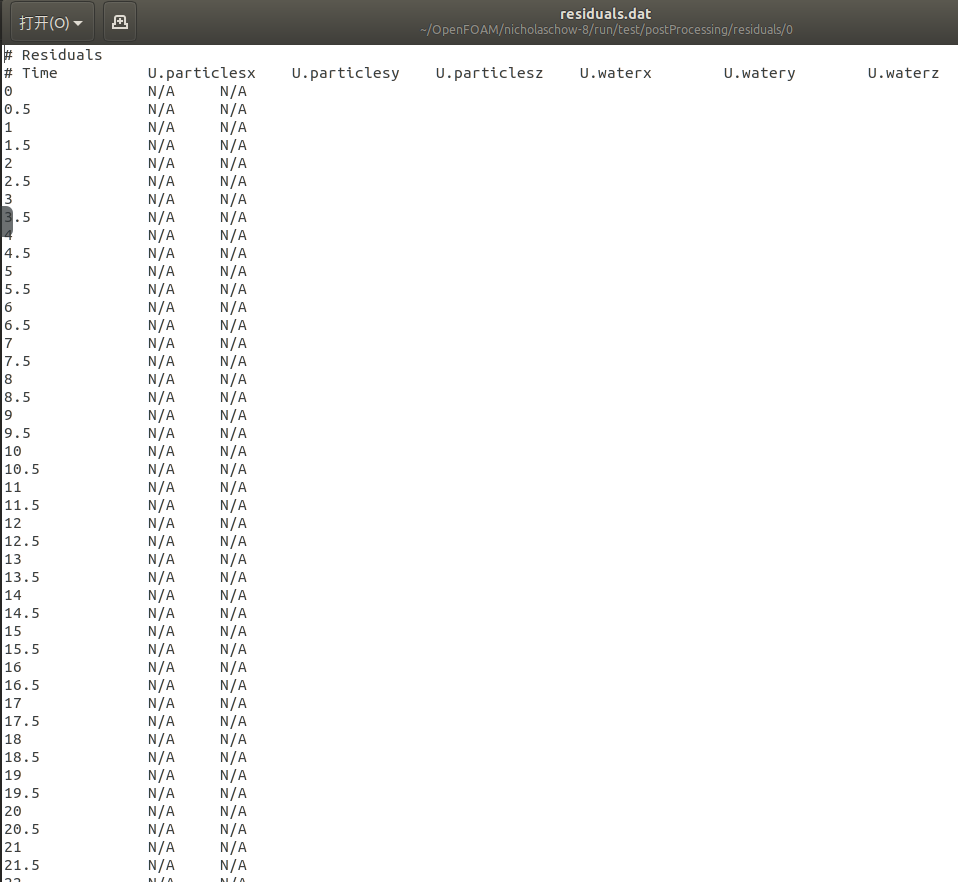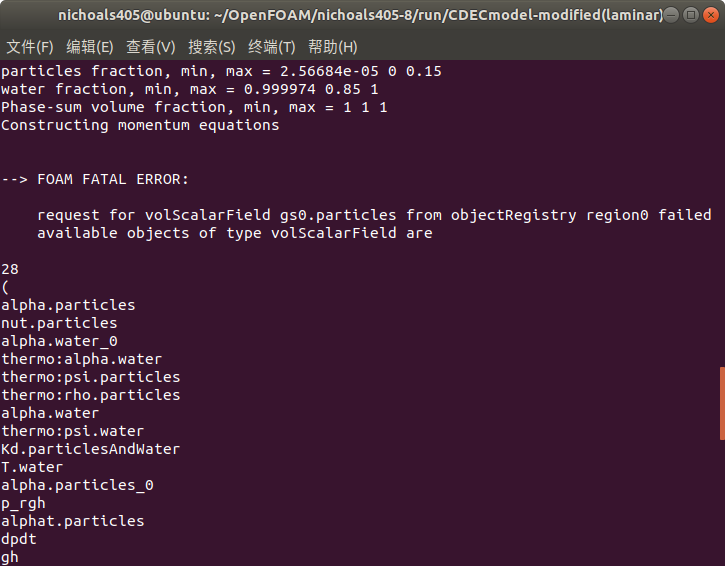用twoPhaseEulerFoam求解水砂输送的问题
-
各位前辈好,我想在一个长方体几何模型中从左往右输送水(85%)砂(15%)混合物,观察砂的堆积形态(如下图所示)。
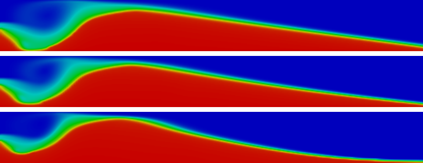
我的速度边界为:object U.particles; internalField uniform (0 0 0); boundaryField { INLET { type fixedValue; value uniform (0.5 0 0); } OUTLET { type inletOutlet; inletValue uniform (0 0 0); value uniform (0 0 0); } WALL { type zeroGradient; } frontAndBackPlanes { type empty; } } object U.water; internalField uniform (0.5 0 0); boundaryField { INLET { type fixedValue; value uniform (0.5 0 0); /*type interstitialInletVelocity; inletVelocity uniform (0.8 0 0); alpha alpha.water; value $internalField;*/ } OUTLET { type inletOutlet; inletValue uniform (0 0 0); value uniform (0 0 0); } WALL { type noSlip; }压力边界为:
internalField uniform 0; boundaryField { INLET { type fixedFluxPressure; value $internalField; } OUTLET { type fixedValue; value uniform 0; } WALL { type zeroGradient; } frontAndBackPlanes { type empty; } }但不知道为何第一个迭代步中,e.water的迭代次数就超了,导致压力的迭代次数也很大,算了几个时间步后就发散了:

实时证明第一个时间步算出来的速度和压力结果就不对,还请各位前辈告知e.water是什么量,这样设置边界条件对不对。谢谢!@东岳
-
@东岳 非常感谢东岳老师这么晚还在回复问题!!!希望您也能休息好!!!目前有三个问题:
(1)我在residuals字典里面写明了U.particles(U.particle监控不了),才出现的N/A这个问题;
(2)模拟结果表明砂堤没有沉积(注入的固相百分数就为0.15,而且停止注入固相后,固相整体被往前推动),不知道是不是颗粒动理论模型设置的问题
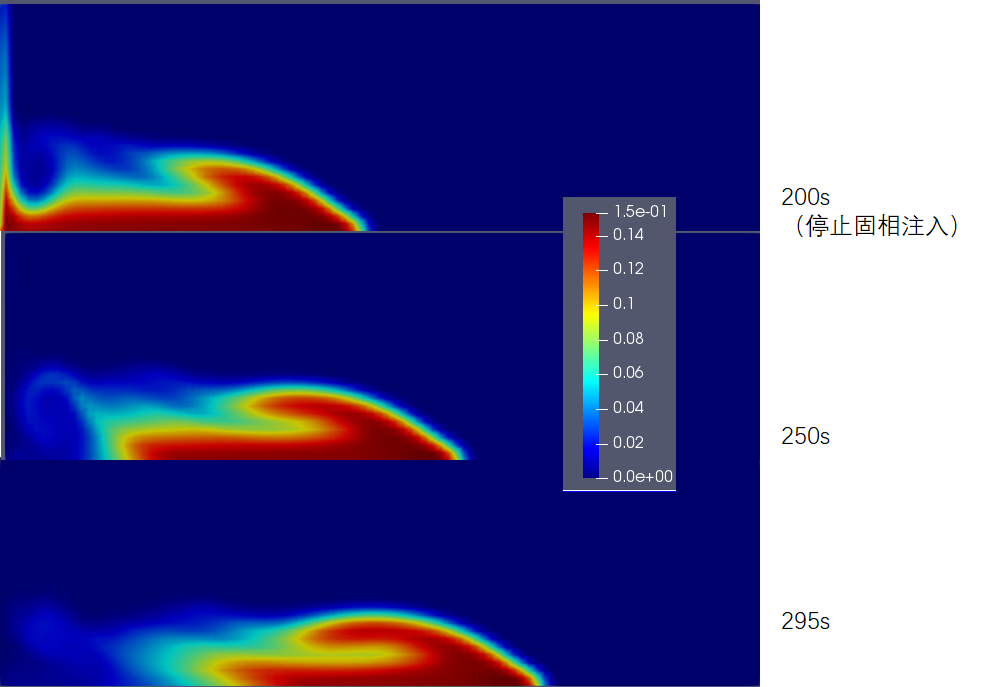
(3)液相、固相注入速度都是(0.5 0 0),但计算过程中底部达到4m/s+,这是否合理(液相的internalFiled也给的0.5,感觉液-固混合液比纯液跑得还快了):

(边界给的固定值(0 0 0),插值看不到结果 )
)希望您有空的时候能帮忙解答,不胜感谢!
-
@东岳 老师,您看:
ddtSchemes { default Euler; } gradSchemes { default Gauss linear; } divSchemes { default none; "div\(phi,alpha.*\)" Gauss vanLeer; "div\(phir,alpha.*\)" Gauss vanLeer; "div\(alphaRhoPhi.*,U.*\)" Gauss limitedLinearV 1; "div\(phi.*,U.*\)" Gauss limitedLinearV 1; "div\(alphaRhoPhi.*,(h|e).*\)" Gauss limitedLinear 1; "div\(alphaRhoPhi.*,K.*\)" Gauss limitedLinear 1; "div\(alphaPhi.*,p\)" Gauss limitedLinear 1; div(alphaRhoPhi.particles,Theta.particles) Gauss limitedLinear 1; "div\(alphaRhoPhi.*,(k|epsilon).*\)" Gauss limitedLinear 1; div((((alpha.water*thermo:rho.water)*nuEff.water)*dev2(T(grad(U.water))))) Gauss linear; div((((thermo:rho.particles*nut.particles)*dev2(T(grad(U.particles))))+(((thermo:rho.particles*lambda.particles)*div(phi.particles))*I))) Gauss linear; div((((alpha.particles*thermo:rho.particles)*nuEff.particles)*dev2(T(grad(U.particles))))) Gauss linear;//改层流后多出 } laplacianSchemes { default Gauss linear uncorrected; bounded Gauss linear uncorrected; } interpolationSchemes { default linear; }

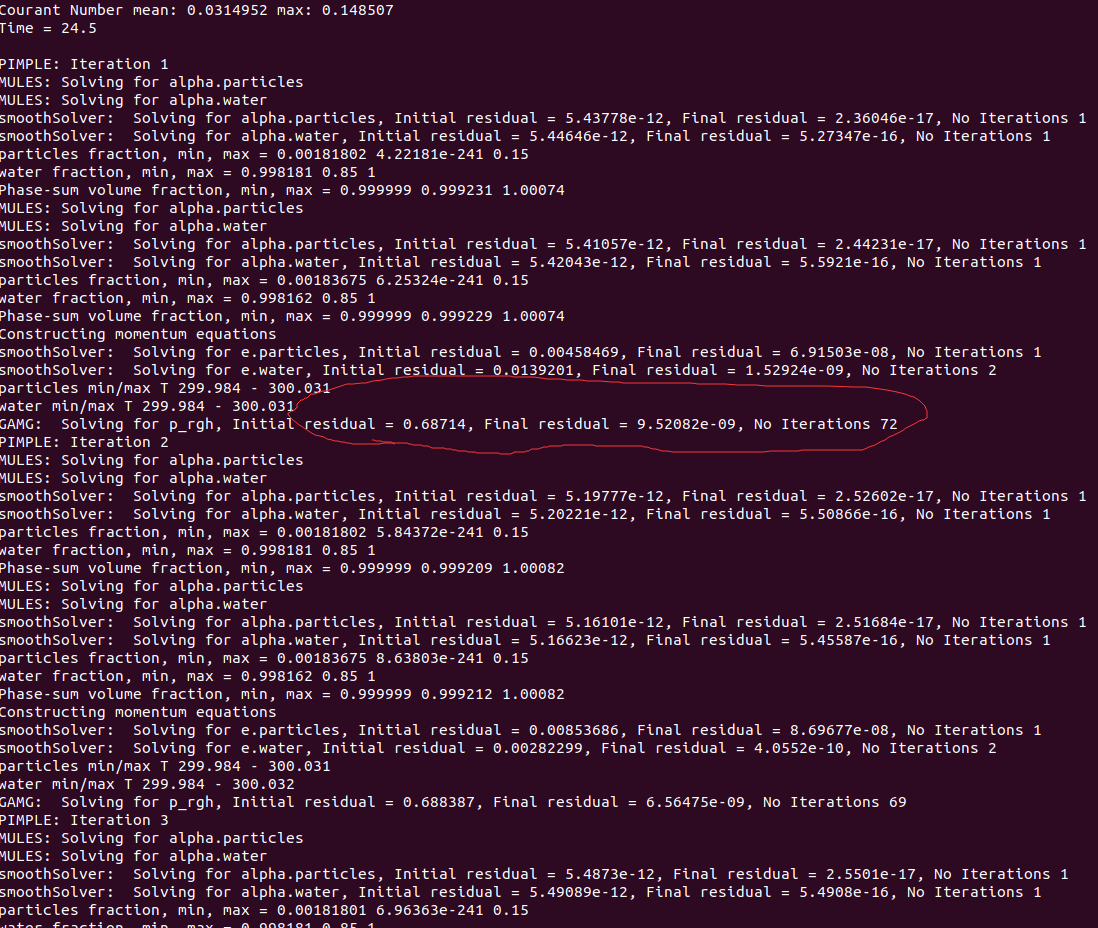
 (prgh)
(prgh) (p)
(p)
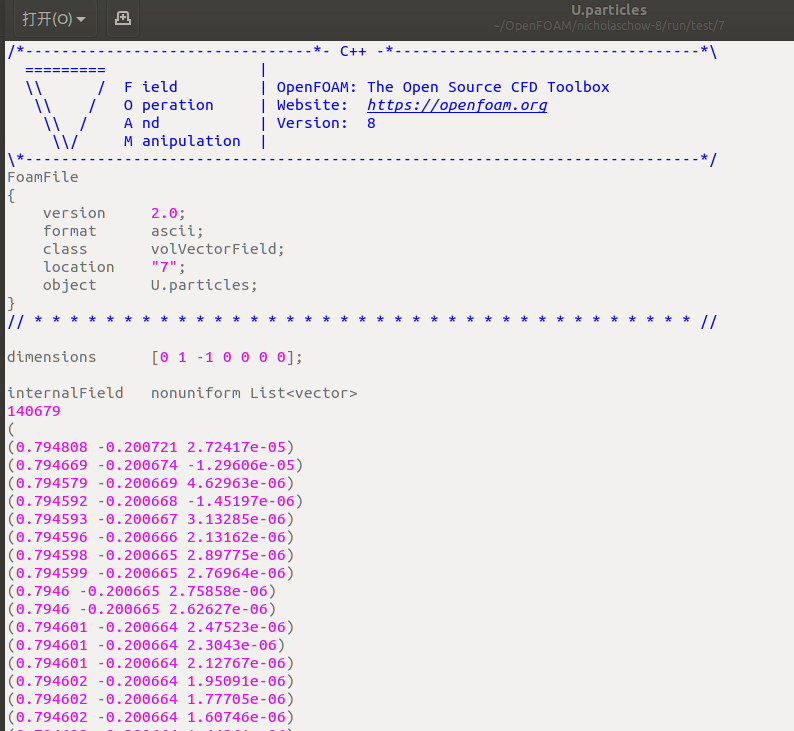 (颗粒速度)
(颗粒速度) (液体速度)
(液体速度)